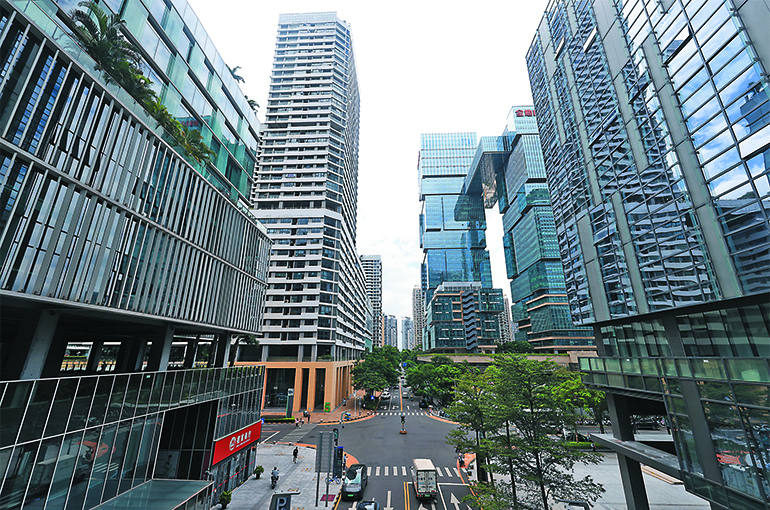 Transborder E-Commerce Stokes Demand for Offices, Warehouses in Southern China
Transborder E-Commerce Stokes Demand for Offices, Warehouses in Southern China(Yicai) Feb. 5 -- The rapid growth of cross-border e-commerce has boosted demand for both office and warehouse spaces in some parts of southern China, leading to high occupancy rates and low vacancy rates in these markets.
Warehouse vacancy rates fell to single digits in five cities in South China last year, according to global real estate services company Jones Lang LaSalle.
Certain office locations are also trending. Bantian, a suburban area of Shenzhen, has seen strong demand for office space due to the high concentration of cross-border e-commerce businesses, according to property services firm Cushman & Wakefield. This stands in sharp contrast to the city's premium office market, where vacancy rates climbed to 26.6 percent last year.
Bantian's Galaxy World project, with a total office space of around 750,000 square meters, was about 96 percent occupied in 2024. The project, which does not meet Grade A office standards, had a net absorption rate of over 170,000 sqm, surpassing the city’s 120,000 sqm average for premium offices, indicating an uptick in new contract signings compared with vacancies.
Nearly half of Galaxy World's new office renters were cross-border e-commerce merchants last year, Huang Shuli, head of corporate services for South China at Cushman & Wakefield, told Yicai.
The international business division of an e-commerce platform rented an entire floor in Shenzhen's Qianhai area a year and a half ago and is now planning to expand its office space to around 20,000 sqm, according to Li Wenjie, commercial real estate director for West and South China at JLL.
Warehouses and logistics parks in southern China are also experiencing a surge in demand. The non-bonded warehousing and logistics markets in five cities -- Guangzhou, Shenzhen, Dongguan, Foshan, and Huizhou -- had a combined net absorption area of over two million sqm for the second straight year in 2024, driven by booming transborder e-commerce while demand from traditional industries remained low, according to JLL.
Fueled by steady demand from cross-border e-retailers, the vacancy rate of non-bonded logistics warehouses -- facilities for post-tax storage -- in the five cities has stayed between 3 percent and 7.5 percent, JLL data show.
The roughly 2.1 million sqm of new warehousing in the five cities last year was basically all leased by cross-border e-commerce companies, with the sector now accounting for about 35 percent of total warehousing demand, said Yang Jinyi, who heads up industrial and logistics services at JLL Guangzhou.
For instance, a 420,000-sqm warehouse park launched last year Qingyuan, Guangdong province by Global Logistic Properties was fully leased by a leading transborder e-commerce firm. Similarly, another 270,000-sqm park that GLP opened in Dongguan in 2023 also lists such businesses as key tenants.
Yang from JLL predicted that cross-border merchants will continue to drive the growth in warehouse leasing over the next two years.
Editors: Tang Shihua, Emmi Laine